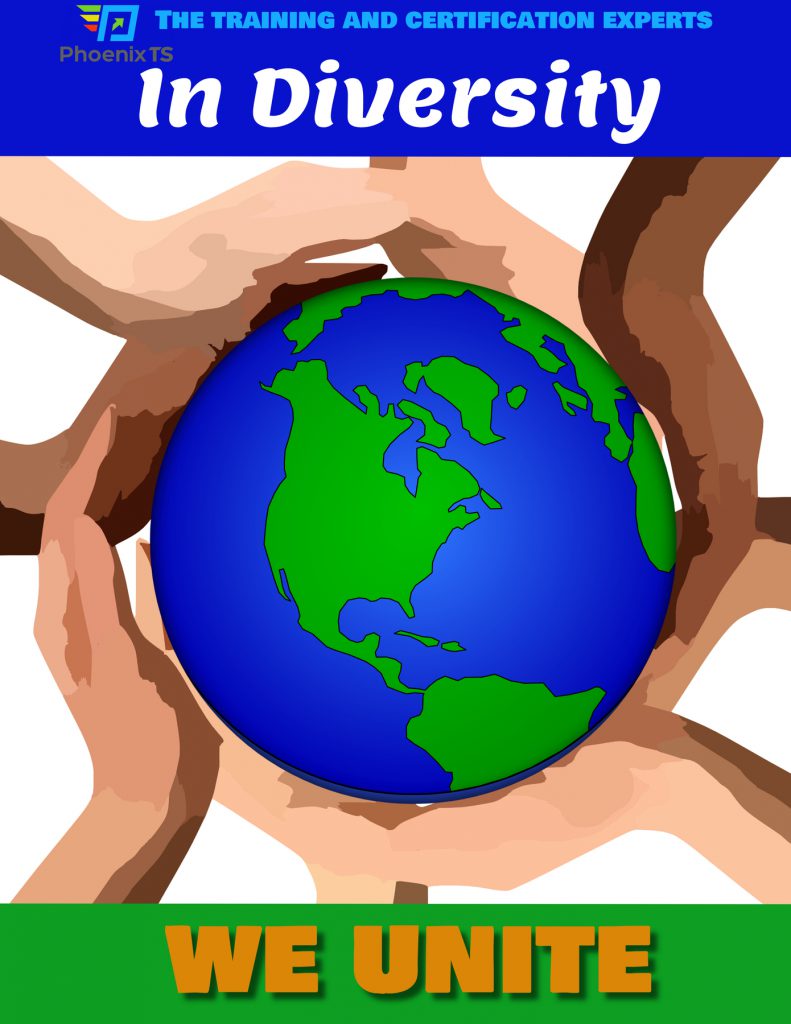Alex Walters
Diversity is intimidating. Some people think they know what it means and may be able to describe what it is supposed to look like. Others feel that it is a touchy topic. Either way, diversity is an important and it must be addressed. It is not just about what people look like or what or who they choose to believe in. It has a lot to do with background, personal experience and how people trat each other. Diversity is important because it teaches people how to respect and accept one another, even if they do not necessarily agree. The topic has recently gained more attention with the news focusing on racial injustices that have been taking place all over the world. However, the conversation does not end with the news. These issues extend into our homes, schools, and businesses. You may want to shy away from speaking about diversity because you are afraid to offend or insult. However, it is important to recognize that diversity is about understanding. To understand one another, we must embrace diversity.

Diversity in the Workplace
The Merriam Webster dictionary defines diversity as, “the condition of having or being exposed of different elements: variety, especially the inclusion of different races, cultures, etc. in a group or organization” (Diversity. Merriam -Webster Dictionary, (n.d.). In the cooperate world, diversity is usually approached from a business standpoint because companies like variety. Companies need people with different interests and skill sets to help their business thrive. The more diverse the group of people, the better chance of learning new and interesting perspectives. Diverse opinions in the workplace lead to new business strategies that can potentially help company grow. Another advantage of workplace diversity is a rich company culture. Companies should aim to have an inviting atmosphere where no one person feels excluded. When a company has a variety of employees, employees have a better chance of connecting with someone with similar tastes, experiences, or learning styles. This helps the company function better because employees can create working bonds with one another. Therefore, morale, positivity, and teamwork are strengthened as well. For instance, “…when employees believe their company supports diversity and helps them feel included, they report an 83% increase in their ability to innovate, as well as a 42% increase in team collaboration” (Baron, Ph.D., J. 2019).
However, diversity goes far beyond skill set and interests. Diversity encompasses race, gender identification, religion, age, disability, politics, etc. Supervisors and managers must educate themselves in the appropriately to understand how to manage a group of diverse people. Leaders also need to know about diversity laws and policies and how diversity needs to be demonstrated in a place of business. Although some may believe they have a general idea of what is accepted and what is not. Many companies fall short in their diversity implementation. The article, “Serious About Diversity: Enough Already with the Business Case” by Robert J. Ely and David A. Thomas explains how management misses the mark when discussing diversity. According to the article, research demonstrates that putting more women in management positions or hiring more minority workers will not adequately confront issues of diversity. For companies to really embrace diversity they must accept that, “Increasing diversity does not, by itself, increase effectiveness; what matters is how an organization harnesses diversity, and whether it’s willing to reshape its power structure” (Ely, R. J., & Thomas, D. A. 2020). Leadership can start to tackle diversity by implementing real, concrete changes.

Some Do’s and Don’ts
Do: Understand the law: The Equal Employment Opportunity Commission (EEOC) prohibits the discrimination of job applicants based upon, “race, color, religion, sex (including pregnancy, transgender status, and sexual orientation), national origin, age (40 or older), disability or genetic information” (U.S. Equal Employment Opportunity Comission,2021). Supervisors and managers must recognize how systems of oppression and exclusion are recreated in their company and then develop a plan to implement change (Ely, R. J., & Thomas, D. A. 2020).
Do: Involve all employees: Diversity should not be limited to management or certain employees. Curate a diversity plan that includes the entire company.
Do: Build Trust: Create a safe space where your employees feel comfortable sharing their experiences without being afraid of backlash or feeling like their feelings do not matter.
Do: Address microaggressions and bias. Education and examples about microaggressions will help employees understand how to recognize offensive behavior that they may not even know they are exhibiting.
Do not: Sign up for traditional trainings. Traditional trainings do not work because these classes are usually short – lived, forced, and give off an accusatory vibe. (Baron, Ph.D., J. 2019) Instead,give your employees options. Let them decide if they want to take these trainings. Provide them with surveys and benchmarks to gain insight about diversity and inclusion metrics. (Duong, L. 2016).
Do not: Expect everyone to see the world the way you do. Everyone is different, everyone has different beliefs. Learn to understand that people have different perspectives. You may not also agree but you do have to respect the opinions of others.
Do not: Limit access to education and learning. People can not learn about diversity in a day so do not limit learning. Encourage resource groups and provide access to diversity and inclusion materials. Always demonstrate diversity and inclusion throughout your entire company.
Diversity at Phoenix TS
Phoenix TS’ (2) two day Diversity and Sensitivity course is taught by expert leaders in the Professional Development industry. The course is conversational and provides participants with the opportunity to learn about stereotypes, bias, sexism, racism, ageism, discrimination, and proper communication skills. Participants will explore real life issues using case studies and course discussion. They will develop personal action plans that will help them plan strategies for practicing diversity in their own organization. The course is inclusive and can be used to educate supervisors, employees, or anyone just wanting to learn. Again, the diversity training at Phoenix TS, will not be the answer to end all diversity issues but it will be a positive step in the right direction.
Upcoming Live Online Diversity and Sensitivity Class Schedule
– June 9th Live Online
– July 12th Live Online
– August 17th Live Online
– September 7th Live Online
– October 19th Live Online
For more information call, 240.667.7757 or visit phoenixts.wpenginepowered.com

References
Baron, Ph.D., J. (2019, December 11). Traditional diversity training doesn’t work. Why not? And what does? Diversity Jobs. https://www.diversityjobs.com/2019/12/traditional-diversity-training-doesnt-work-why-not-and-what-does/.
Diversity. Merriam -Webster Dictionary. (n.d.). https://www.merriam-webster.com/dictionary/diversity.
Duong, L. (2016, May 24). The Do’s & Don’ts of Workplace Diversity Initiatives. Quantum Workplace. https://www.quantumworkplace.com/future-of-work/the-dos-donts-of-workplace-diversity-initiatives.
Ely, R. J., & Thomas, D. A. (2020). Getting Serious About Diversity: Enough Already with the Business Case. Harvard Business Review. https://hbr.org/2020/11/getting-serious-about-diversity-enough-already-with-the-business-case#
Employees & Job Applicants. U.S. Equal Employment Opportunity Commission. (2021). https://www.eeoc.gov/employees-job-applicants.
Steele, Y. (2018, September 14). Five Do’s and Don’ts that Foster Diversity, Inclusion and Retention. CompTIA. https://www.comptia.org/blog/five-do-s-and-don-ts-that-foster-diversity-inclusion-and-retention.
subscribe by email
Stay Ahead
Related Posts
-
Professional Development
Diversity: A Tough Topic Worth Tackling
May 18, 2021
-
Professional Development
Learn How to Make Your Dream Business a Reality
February 17, 2021
-
Professional Development
How to Maintain Team Building While Working Remotely!
September 14, 2020
